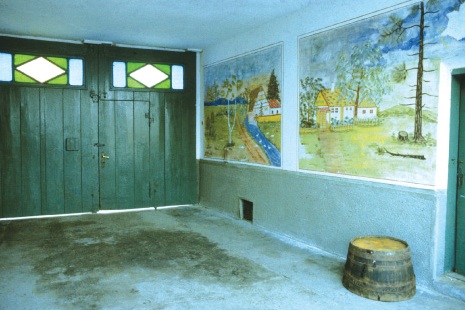Oľga Danglová
In the 1960s and 1970s, some houses in villages around the towns of Senica, Skalica and Malacky were being decorated very uniquely. Glass gates and walls of such houses were decorated with landscape paintings. Currently, such paintings are rare examples of architectural decoration of the period.
Originally, the landscape painting was a very rare discipline of traditional visual culture of rural areas. Where do the romantic landscapes of the region come from? Two concepts have been identified when examining the origin of the landscapes.
In the first half of the 20th century, interior and exterior walls were decorated with wall paintings in the regions of Záhorie and around the border between Moravia and Slovakia. Later, gates and gateways were decorated, too. The technique was similar to a technique of glass painting; a paint was applied from the inside of glass and another glass was added to protect the picture.
Paintings were usually made by amateur individuals of farming, teaching or craft occupation, often wall painters. They were painting landscapes as a free time activity or to earn their living. They were painting copies of old postcards, picture magazines etc. and preferred picturesque motifs such as gamekeeper’s lodge, rural chalets, villages with churches, watermills, romantic ruins of strongholds and castles. Hunting motifs they were painting were similar to the hunting sceneries lithography from the 19th century. Naïve or, strictly speaking, kitsch landscapes represented idyllic life in nature in the minds of rural people.
Such paintings were the result of the landscape painting tradition of the 19th century, mainly its picturesque second-hand subsection. Rural self-educated individuals used the remote style and combined it with the local tradition according to their individual skills and knowledge.
